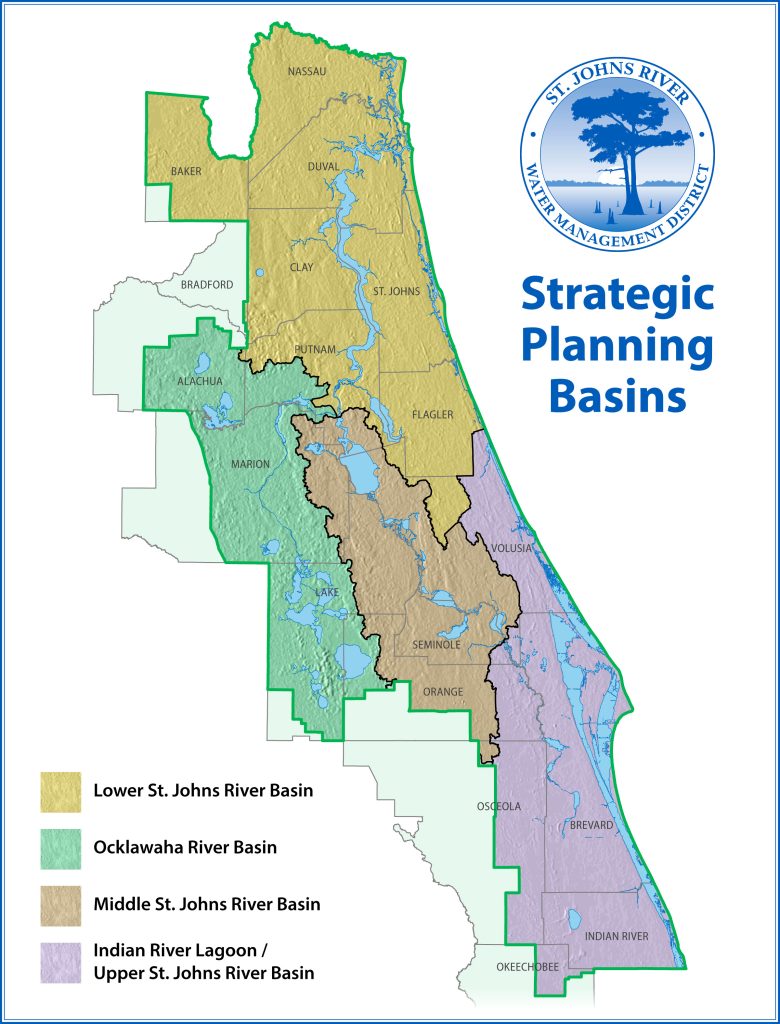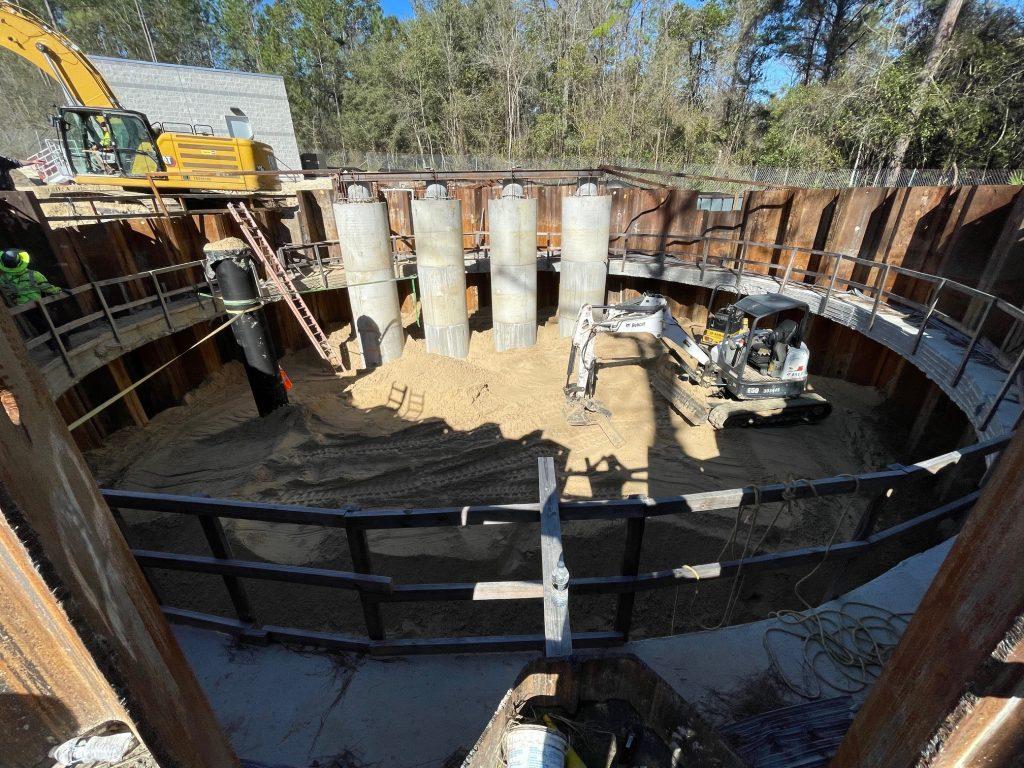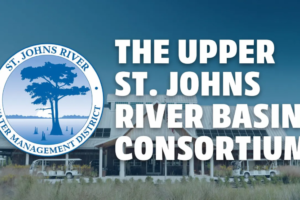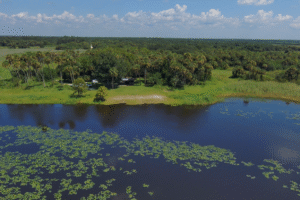Dividing for success: Strategic planning basins promote project development and efficiency
Aug. 8, 2024
Work continues on the pump station at the Black Creek Water Resource Development project as the contractor backfills the coffer-dammed area following the successful connection to the intake location through the microtunnel.
Spanning nearly 13,000 square miles over 18 counties, the St. Johns River Water Management District has taken a unique approach to protecting and managing the water resources within their jurisdiction – its new Basin Management Program.
The program splits this vast area into four strategic planning basins, allowing for customized approaches tailored to meet the needs of each specific location. Each basin is overseen by a dedicated manager to develop actionable initiatives to ensure the environment is protected and the community’s needs are met.
“Dividing the District into these four planning basins results in reasonably sized areas for each Basin Manager to oversee the assessment of the basin’s resources, the definition of the regions specific needs, and the development of project options to address them,” said St. Johns River Water Management District Executive Director Mike Register. “With these Basin Management Plans, we will be able to more effectively create work plans to tackle challenges unique to each area while remaining dedicated to our overarching core missions that aren’t regionally specific.”
Drawing upon research, science, data and modeling, and local stakeholder input, the program will actively engage in collaborative efforts with local and state partners to clearly identify and implement project opportunities.
“Although the implementation of this program has just begun, projects within these basins are already underway,” Register says. “The Basin Management Program will build on these initiatives and really propel further progress throughout the entire District.”
The Upper St. Johns River and Indian River Lagoon both present unique resource challenges but are inextricably connected by historical drainage practices. Efforts to address nutrient loading to the lagoon by reversing some of these past drainage alterations have been ongoing. The Crane Creek/M-1 Canal Flow Restoration Project’s aim is to reduce nutrient loading to the Indian River Lagoon. When complete, the historic flow pattern of stormwater flowing toward the St. Johns River will be re-established but with water quality treatment, providing a more resilient alternative water supply and an ecological lift for both systems.
The Middle St. Johns River Basin is an area where the flow characteristics of the St. Johns River make maintenance of existing natural floodplain crucial; therefore, the District continues to identify priority lands to maintain floodwater storage. An initiative to improve water quality within the basin will employ an innovative media-based nutrient removal system to reduce harmful nutrients in Lake Jesup, a nutrient-impaired water body.
The Ocklawaha River Basin contains Lake Apopka, headwaters to the Ocklawaha chain of lakes, which was once plagued by degraded water quality. It now stands as a testament to the nearly three decades of improvement efforts. The lake’s phosphorus concentrations have declined by 69 percent, accompanied by a staggering 93 percent increase in water clarity by the end of 2023. These accomplishments spurred the natural regrowth of previously absent submerged aquatic vegetation, with 96 percent of the lake’s shoreline now adorned with native plants. The District remains steadfast in its dedication to restoration efforts with work to accelerate the re-growth of vegetation through plantings.
The Lower St. Johns River Basin, which includes Flagler, St. Johns, Clay, Duval, Putnam, Baker and Nassau counties, is one of the fastest growing areas in the state. The Black Creek Water Resource Development Project will help meet future water supply demands while protecting natural resources. This regionally beneficial water resource development project will utilize environmentally sustainable flows from Black Creek to recharge the Upper Floridian aquifer and increase water availability.
Once all three construction components – a surface water intake and pump station, pipeline and treatment system – are complete, up to 10 million gallons per day could be pumped to the treatment system from the South Fork of Black Creek prior to discharging to Alligator Creek and eventually Lake Brooklyn.
“The Basin Management Program will increase collaborative efforts and facilitate bringing stakeholder groups together to address water resource challenges within each basin,” said the District’s Director of the Division of Basin Management and Modeling Michelle Brown. “Our goal is to maximize water resource benefits, adding to the quality of life for all residents who live throughout the District.”







